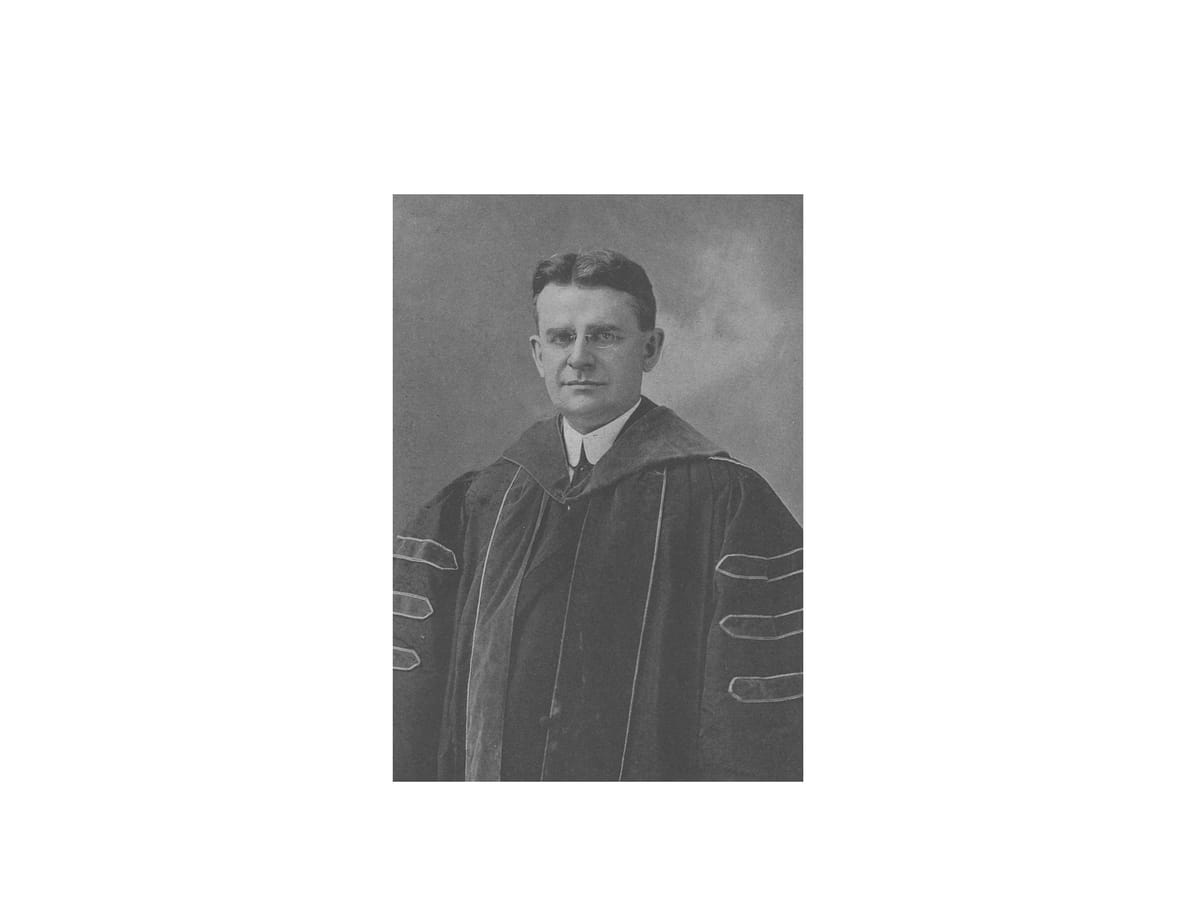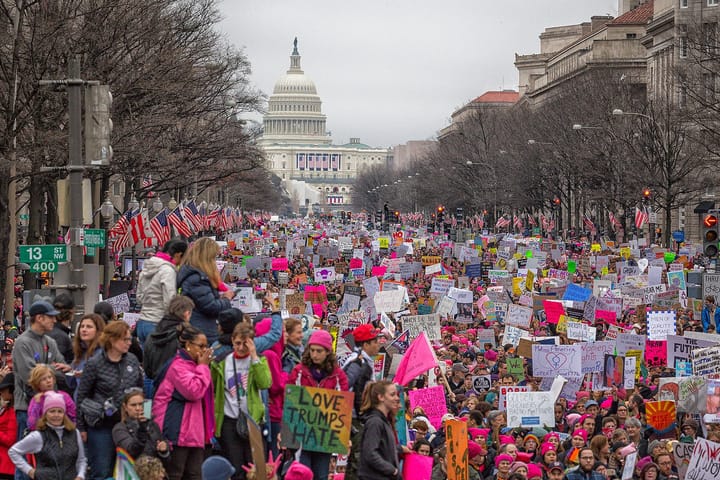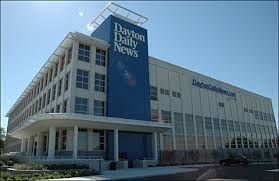Local Legends: Prexy
"A man of deep religious belief, in addition to being a staunch progressive, Benton became a minister of the Methodist Episcopal Church in 1886, was ordained a deacon in 1899 and became a church elder in 1900."

A consummate educator, Guy Potter Benton was responsible for both expanding and saving Miami University.
The son of Daniel Webster and Harriett Maria (Wharton) Benton, Benton was born in Kenton, Ohio, on May 26, 1865, just after the end of the American Civil War. He hailed from an agricultural family, typical of rural Ohio in that era, and would rise to be the president of multiple institutions of higher learning.
Benton’s long career in education began as a student in Kenton’s local schools and led him to Baker University, where he received his bachelor’s degree in 1886. He later earned his Doctor of Divinity from Baker and also studied at Ohio Wesleyan University, the University of Wooster and several other academic institutions.
A man of deep religious belief, in addition to being a staunch progressive, Benton became a minister of the Methodist Episcopal Church in 1886, was ordained a deacon in 1899 and became a church elder in 1900.
In 1889, he was appointed the superintendent of schools at Fort Riley, Kansas, holding that post until moving up to be the assistant state superintendent of public instruction for the state of Kansas in 1895. Dolla (Konantz) Benton became his bride on Sept. 4, 1889, following a ceremony held at an M.E. Church in Crawford County, Kansas.
After a year at the state level, he returned to Baker University as a professor of history and sociology, but remained there for only three years before becoming the president of Upper Iowa University. With the resignation of President David Tappan, Miami University trustees faced the daunting task of quickly finding a replacement.
Long-serving trustee George Eastman was charged with this task, and struck out with the first four of five final candidates he met with in Chicago. The final candidate was Benton, who, through his knowledge, background, tact and welcoming personality, was unanimously elected president of Miami.
Assuming his new post on July 1, 1902, Benton’s immediate concern was working to establish the Normal School, a teacher education school, at Miami, which had been created by the Ohio General Assembly at the end of Tappan’s Administration. Given his background as a teacher, it was probably with great joy that Benton handed the first graduates of the Normal School their diplomas at the end of the 1903-1904 school year.
Benton was described in one account as “a truly friendly man, but not a soft one when the occasion called for firmness.” He often referred to his students by their first names, and they called him “Prexy” in return.
Accounts disagree on his administrative abilities, simultaneously describing him as both a talented and aloof administrator. Regardless of his skill in this area, he did have the ability to adapt to whatever was required of a particular situation. He also possessed a strong, booming speaking voice and a certain personal charisma.
He used these qualities to successfully lobby for financial support of the university, which enabled the expansion that became the hallmark of his term as president. In addition to constructing several buildings that redefined Miami’s campus, Benton also grew the university from 175 students and 13 faculty members to 550 students and 39 faculty members
This included the expansion of Miami's education of women. Benton oversaw the appointment of Elizabeth Hamilton as Miami’s first Dean of Women, created women’s sports teams, supported the founding of Delta Zeta Sorority and began building a second female dormitory, Bishop Hall. A local book published in 1947 commented on Benton, “Under his administration…the college got its first real growth and momentum.”
However, there was a threat to the university's future existence that arose with the Lybarger Bill in 1906. This bill, if enacted into law, would have defunded all operations of Miami University and Ohio University, except for their Normal Colleges, and would have instead funded only Ohio State University.
Benton became one of the chief opponents of this bill and, using his skills of persuasion, grew significant opposition to the measure. The ultimate defeat of the Lybarger Bill and adoption of a compromise led to Benton being known as the “Savior of Miami.”
Benton left Miami University to accept the presidency of the University of Vermont in 1911, where he stayed until resigning in 1919. Immediately after accepting the position, he was sued by Oxford drugstore owner Dr. Hugh Moore, who had Benton arrested by Vermont authorities on a charge of malicious prosecution.
Moore claimed that Benton had colluded with the mayor of Oxford to have Moore arrested on a charge of selling liquor to Miami students in November 1910. Moore was arrested but later acquitted after an appeal. Although the suit persisted into 1914, it was ultimately dismissed by an appeals court.
It wasn’t the only incident involving liquor in which the teetotaling temperance supporting Benton was involved. Benton had thrown his support behind the passage of a dry law, which went into effect in 1906. An out-of-business saloon owner verbally confronted Benton in the street, “You are Guy Potter Benton, ain’t you? You are the man that would vote a man out of business and take the bread and butter out of the mouths of his wife and baby.”
With the impending U.S. involvement in World War I, Benton sought to serve his country, at one point even writing to Theodore Roosevelt asking to serve as a colonel in one of the divisions being raised by T.R.
Instead, Benton took a leave of absence and went overseas with the YMCA, attached to the American Expeditionary Force, where he served as the director in charge of educational work for the U.S. 3rd Army. The following year, as a civilian, he was awarded the Army Distinguished Service Medal for his “marked ability, untiring energy, and loyal devotion,” which contributed to teaching 8,000 American doughboys how to read and write.
After the war, Benton went to the Philippines, where he became the chief educational consultant and president of the University of the Philippines. He remained in that post until 1924, when he returned to the United States.
Benton died in Minneapolis, Minnesota, on June 28, 1927, possibly as a result of an illness contracted while in the Philippines. He was buried in the Miami Section of Oxford Cemetery, as was Dolla, who survived him by twenty years before dying on Aug. 14, 1947.
The administrative center on Miami’s campus, built by Benton in 1908, was later named in his honor, as was the current Benton Hall, which was dedicated in 1969.
Brad Spurlock is the manager of the Smith Library of Regional History and Cummins Local History Room, Lane Libraries. A certified archivist, Brad has over a decade of experience working with local history, maintaining archival collections and collaborating on community history projects.




